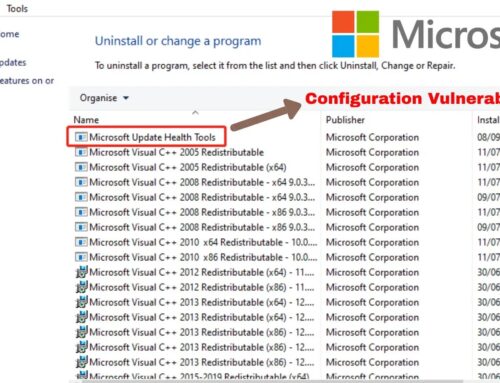
New Phishing Attack Via OneDrive Attacking C-level Employees for Corporate Credentials
In the relentlessly evolving landscape of cyber threats, a sophisticated spear-phishing campaign has emerged, directly targeting the most vulnerable yet critical assets within an organization: its C-level executives. This latest offensive, leveraging the ubiquity of Microsoft OneDrive, represents a concerning escalation, aiming to compromise corporate credentials through cunning social engineering. Understanding the intricacies of this attack is paramount for every organization striving to fortify its digital defenses.
The Anatomy of the OneDrive Phishing Attack
This particular campaign stands out due to its precision and the choice of its attack vector. Unlike broad-net phishing attempts, this is a highly targeted spear-phishing operation. The attackers meticulously craft emails designed to appear as legitimate internal HR communications. The subject matter? Salary amendments – a topic guaranteed to capture the immediate attention of its high-profile recipients.
- Targeted Approach: Senior executives and C-suite personnel are specifically singled out, recognizing their elevated access and critical decision-making roles within organizations across various industries.
- Deceptive Lure: The use of “salary amendments” as the email’s theme exploits a potent psychological trigger, prompting immediate action and reducing scrutiny.
- OneDrive as the Vector: Microsoft OneDrive’s widespread corporate use lends an air of legitimacy to the malicious links embedded within the emails. Users are accustomed to sharing and accessing documents via OneDrive, making them less suspicious of related prompts or links.
- Objective: The ultimate goal is to trick these high-value targets into divulging their corporate login credentials, granting attackers unfettered access to sensitive networks and data.
Why C-level Executives Are Prime Targets
C-level executives, by virtue of their positions, possess privileged access to a corporation’s most sensitive data, critical systems, and financial resources. Compromising their accounts can lead to:
- Data Breaches: Access to intellectual property, customer data, and strategic financial information.
- Financial Fraud: Ability to initiate unauthorized wire transfers or compromise financial systems.
- Supply Chain Attacks: Leveraging executive access to pivot to partners or customers, creating a broader risk landscape.
- Reputational Damage: Significant loss of trust from customers, investors, and the public.
Their demanding schedules and reliance on quick communication make them susceptible to well-crafted social engineering tactics that bypass traditional security measures.
Remediation Actions and Proactive Defenses
Combating such sophisticated attacks requires a multi-layered defense strategy, combining technological safeguards with robust employee training.
- Enhanced Email Security Gateways: Implement advanced email security solutions capable of detecting sophisticated phishing attempts, including those leveraging known cloud services. Look for features like URL rewriting and dynamic payload analysis.
- Multi-Factor Authentication (MFA) Enforcement: This is arguably the most critical defense. Even if credentials are stolen, MFA acts as a roadblock, preventing unauthorized access. Enforce MFA across all corporate accounts, especially for executive-level personnel.
- Security Awareness Training: Conduct regular, targeted training sessions for all employees, particularly executives. These sessions should highlight current phishing trends, demonstrate real-world examples, and emphasize the importance of verifying unexpected communications, especially those concerning sensitive topics like salary or benefits.
- Phishing Simulations: Regularly conduct simulated phishing attacks that mimic current threats, including those using OneDrive or other cloud services. This helps employees recognize and report suspicious emails in a controlled environment.
- Monitor OneDrive and Cloud Activity: Implement robust logging and monitoring for suspicious activity within Microsoft OneDrive and other cloud-based collaboration platforms. Look for unusual login locations, large file downloads, or access patterns that deviate from normal behavior.
- Principle of Least Privilege: Ensure that all users, including executives, operate with the minimum necessary access rights required for their roles. This limits the potential damage if an account is compromised.
- Incident Response Plan: Develop and regularly test a comprehensive incident response plan specifically for credential compromise and phishing attacks. This plan should detail steps for detection, containment, eradication, recovery, and post-incident analysis.
Relevant Tools for Detection and Mitigation
| Tool Name | Purpose | Link |
|---|---|---|
| Microsoft 365 Defender | Comprehensive threat protection, including email and cloud app security. | https://www.microsoft.com/en-us/security/business/microsoft-365-defender |
| Proofpoint Email Security and Protection | Advanced email gateway with URL defense, attachment sandboxing, and DMARC enforcement. | https://www.proofpoint.com/products/email-protection |
| Mimecast Email Security | Integrated suite for email security, archiving, and continuity. | https://www.mimecast.com/products/email-security/ |
| Okta (or similar IdP) | Identity and access management with strong MFA capabilities. | https://www.okta.com/ |
| KnowBe4 (or similar Security Awareness Platform) | Phishing simulation and security awareness training. | https://www.knowbe4.com/ |
Conclusion
The latest phishing campaign leveraging OneDrive to target C-level executives underscores the dynamic nature of cyber threats. It’s a stark reminder that even the most trusted platforms can be weaponized for malicious intent. Organizations must recognize the heightened risk associated with their top-tier personnel and implement robust, adaptive security measures. By combining advanced technical controls with continuous security awareness training and a zero-trust mindset, enterprises can significantly bolster their defenses against these sophisticated and potentially devastating attacks.





